The calcium-sensing receptor suppresses epithelial-to-mesenchymal transition and stem cell- like phenotype in the colon
- PMID: 25879211
- PMCID: PMC4405849
- DOI: 10.1186/s12943-015-0330-4
The calcium-sensing receptor suppresses epithelial-to-mesenchymal transition and stem cell- like phenotype in the colon
Abstract
Background: The calcium sensing receptor (CaSR), a calcium-binding G protein-coupled receptor is expressed also in tissues not directly involved in calcium homeostasis like the colon. We have previously reported that CaSR expression is down-regulated in colorectal cancer (CRC) and that loss of CaSR provides growth advantage to transformed cells. However, detailed mechanisms underlying these processes are largely unknown.
Methods and results: In a cohort of 111 CRC patients, we found significant inverse correlation between CaSR expression and markers of epithelial-to-mesenchymal transition (EMT), a process involved in tumor development in CRC. The colon of CaSR/PTH double-knockout, as well as the intestine-specific CaSR knockout mice showed significantly increased expression of markers involved in the EMT process. In vitro, stable expression of the CaSR (HT29(CaSR)) gave a more epithelial-like morphology to HT29 colon cancer cells with increased levels of E-Cadherin compared with control cells (HT29(EMP)). The HT29(CaSR) cells had reduced invasive potential, which was attributed to the inhibition of the Wnt/β-catenin pathway as measured by a decrease in nuclear translocation of β-catenin and transcriptional regulation of genes like GSK-3β and Cyclin D1. Expression of a spectrum of different mesenchymal markers was significantly down-regulated in HT29(CaSR) cells. The CaSR was able to block upregulation of mesenchymal markers even in an EMT-inducing environment. Moreover, overexpression of the CaSR led to down-regulation of stem cell-like phenotype.
Conclusions: The results from this study demonstrate that the CaSR inhibits epithelial-to-mesenchymal transition and the acquisition of a stem cell-like phenotype in the colon of mice lacking the CaSR as well as colorectal cancer cells, identifying the CaSR as a key molecule in preventing tumor progression. Our results support the rationale to develop new strategies either preventing CaSR loss or reversing its silencing.
Figures
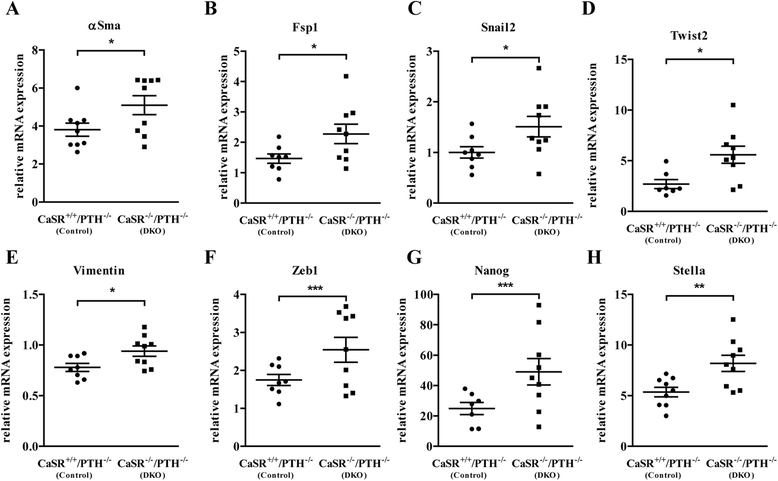
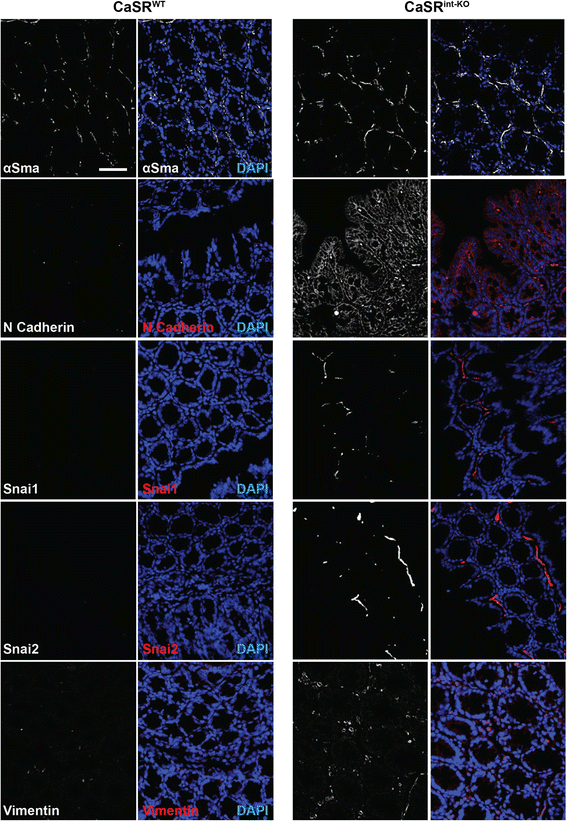

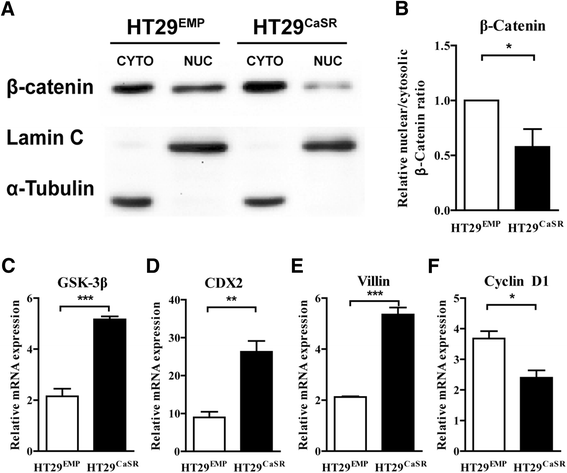
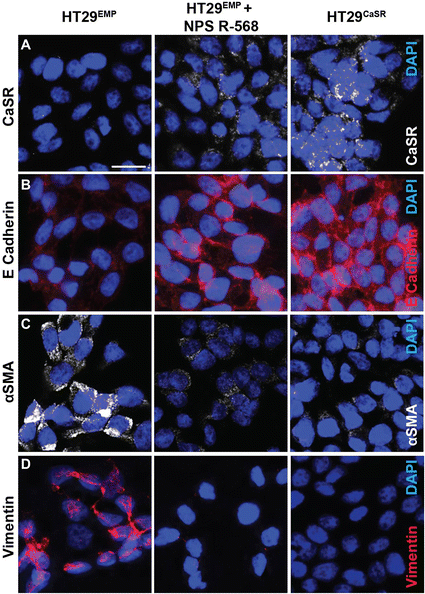
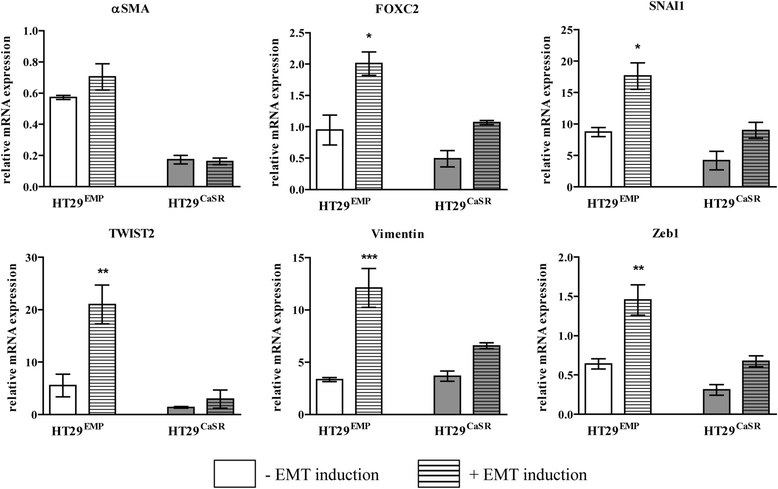

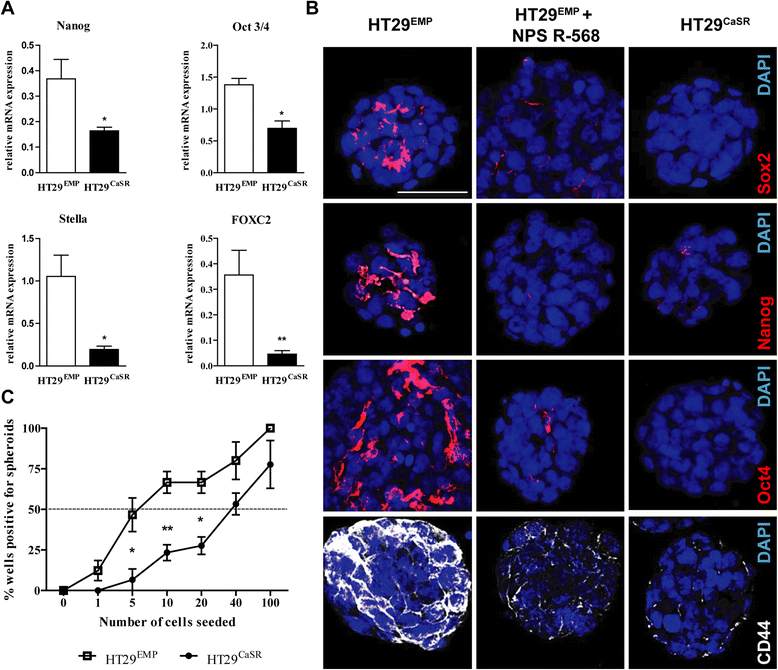
References
-
- Triantafillidis JK, Nasioulas G, Kosmidis PA. Colorectal cancer and inflammatory bowel disease: epidemiology, risk factors, mechanisms of carcinogenesis and prevention strategies. Anticancer Res. 2009;29:2727–37. - PubMed
Publication types
MeSH terms
Substances
Grants and funding
LinkOut - more resources
Full Text Sources
Other Literature Sources
Medical
Research Materials
Miscellaneous

